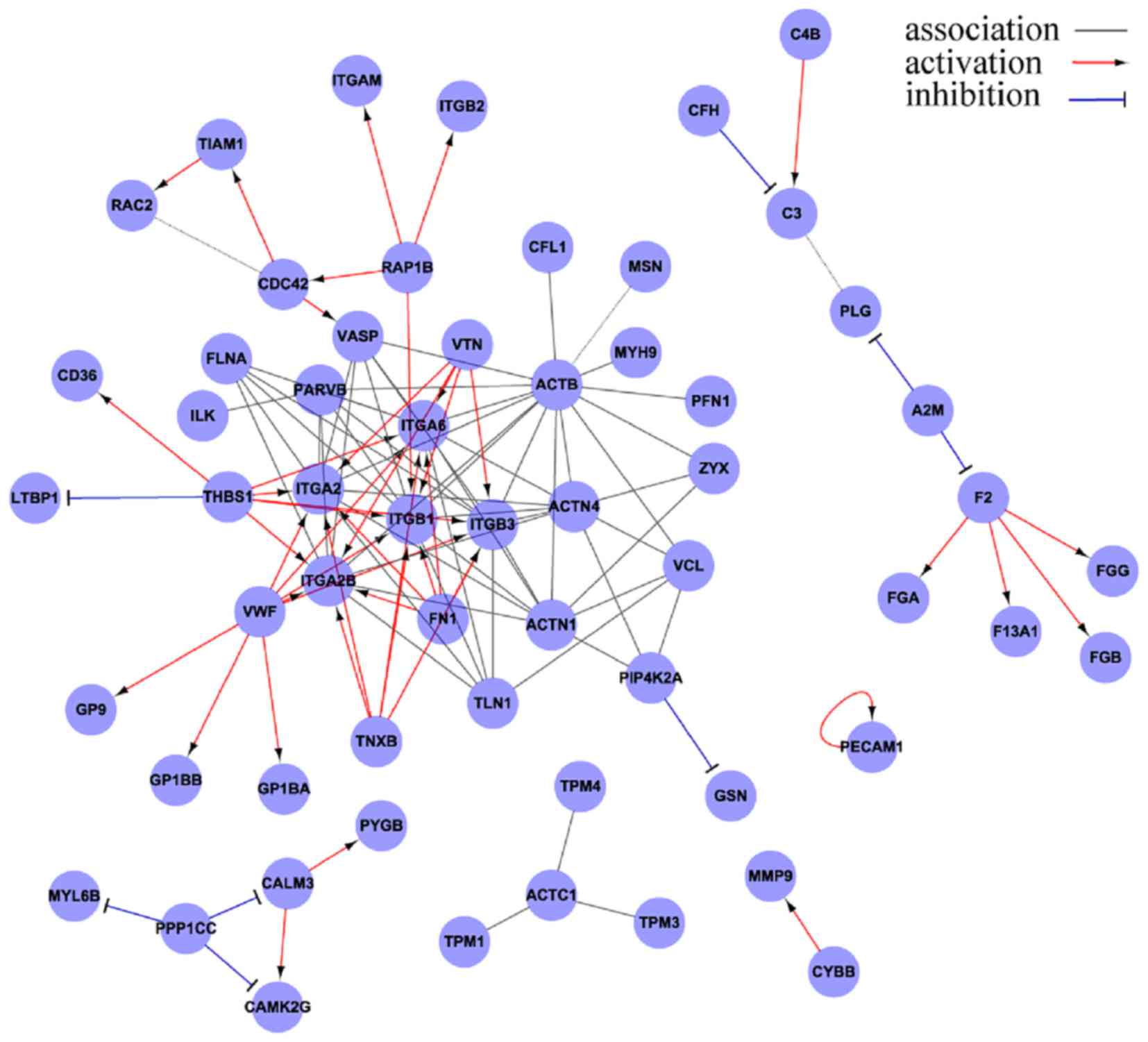Early diagnosis of venous thromboembolism as a clinical primary symptom of occult cancer: Core proteins of a venous thrombus (Review)
- Authors:
- Published online on: May 16, 2017 https://doi.org/10.3892/ol.2017.6175
- Pages: 491-496
Metrics:
Total
Views: 0 (Spandidos Publications: | PMC Statistics:
)
Total PDF Downloads: 0 (Spandidos Publications: | PMC Statistics:
)
Abstract
Malignancy is one of the risk factors of venous thromboembolism (VTE). As a common accompanying factor of malignant tumors, almost 20% of idiopathic VTEs are identified in patients with occult types of cancer as the primary symptom. The type of internal association that exists between malignant tumors and VTE has not yet been determined. The present review discusses the following: i) Reversible combinations between core proteins of venous thrombi and their ligand proteins. With the condition of immune cell balancing function collapse, which is characterized as dysfunction immune cells and impaired immune functions, the human body loses the function of eliminating infectious/malignant cells quickly and effectively. Thus, integrins β2 and β3 on the membrane of platelets and white blood cells are activated to combine with fibrinogen ligands to form an intravenous mesh‑like structure, which acts as an intravenous biological filter that prevents infectious/malignant cells from flowing back into the circulatory system. During the defense process, blood cells (mainly red blood cells) stagnate and fill the filter, which results in venous thrombotic diseases. ii) Tumor cells, which cannot be eliminated quickly, proliferate and invade; or ischemic necrosis destroys peripheral tissues and vessels (veins and arteries), resulting in the formation of a biological filter in injured veins. The filter is filled with stranded tumor cells, which prevents the hemorrhagic metastasis of malignant cells. The formation of an intravenous biological filter results from the transition of the body's own defense capabilities, which is also a physical/histopathological phenomenon. iii) An increase in the number of core proteins in a venous thrombus is a basic molecular step in the formation of intravenous biological filters, which is also defined as a marker of the newly initiated defensive barrier. Increased levels of integrins β1, β2 and β3 are useful in not only the specific diagnosis of VTE, but also in the early recognition of occult malignant tumors in idiopathic VTE patients.
















